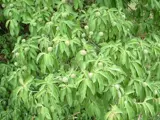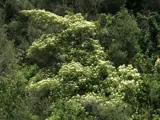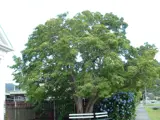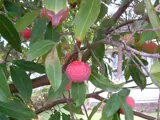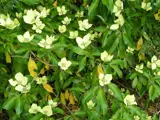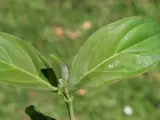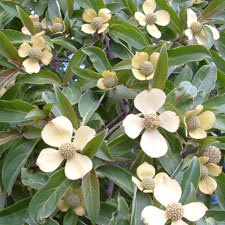 Strawberry dogwood
Strawberry dogwood
Common name: Strawberry dogwood
Botanical name: Cornus capitata
Management programme: Sustained control - Rule 5a applies
Strawberry dogwood is native to the Himalayas along to western China. Brought to New Zealand as an ornamental tree. Quite often, the tree will grow wider than its height.
Why is it a pest?
- Grows rapidly, matures quickly and produces a large number of seeds, which birds eat and disperse widely.
- Tolerates harsh conditions, including drought.
- Spreads by suckering of underground stems and forms dense thickets as it goes.
- Crowds and shades out all other plants and competes aggressively with other understorey species in tall open forest.
- Birds eat the fruit and disperse the seeds far and wide.
Where is it found?
Found throughout the Bay of Plenty and likes shrubland, forest edges, disturbed forest, wetlands, riparian zones, grasslands and urban areas.
What does it look like?
- A small evergreen tree that can reach up to 12m in height.
- Leaves are fuzzy and pale green on the underside.
- Flowers are pale yellow with four large petals and appear January to February.
- Fruit is round and starts as pale pink then turns red as it ripens. Grows 2-4cm in diameter and can be seen from March to April.
What are the rules?
Sustained control
Sustained Control pests are well established in the region and preventing the spread is no longer a realistic objective. Management focuses on reducing general impacts of the pest. Landowners/occupiers are responsible for the control of these pest species on their land. Council may enforce control.
Under rule 5a of the RPMP landowners/occupiers must destroy this pest if required by a written direction from an authorised person unless a property specific pest management agreement has been agreed and signed between the occupier and the Council.
Criteria to meet Rule 5A include when the species is being actively managed by council, other agency and or community group, on an adjacent property. See the Regional Pest Management Plan 2020-2030 rules for Sustained control pests for more information.
How do you get rid of it?
- Hand pull seedlings year round.
- Cut stems at ground level during spring and summer and paste with glyphosate.
Repeat control as new growth appears. Dispose of any plant material at the refuse station in general waste.
To deter new plants from establishing, plant local native shrubs or trees.
CAUTION: When using any herbicide or pesticide, PLEASE READ THE LABEL THOROUGHLY to ensure that all instructions and directions for the purchase, use and storage of the product, are followed and adhered to.
Read more on pest control advice, information and regulations
Images


